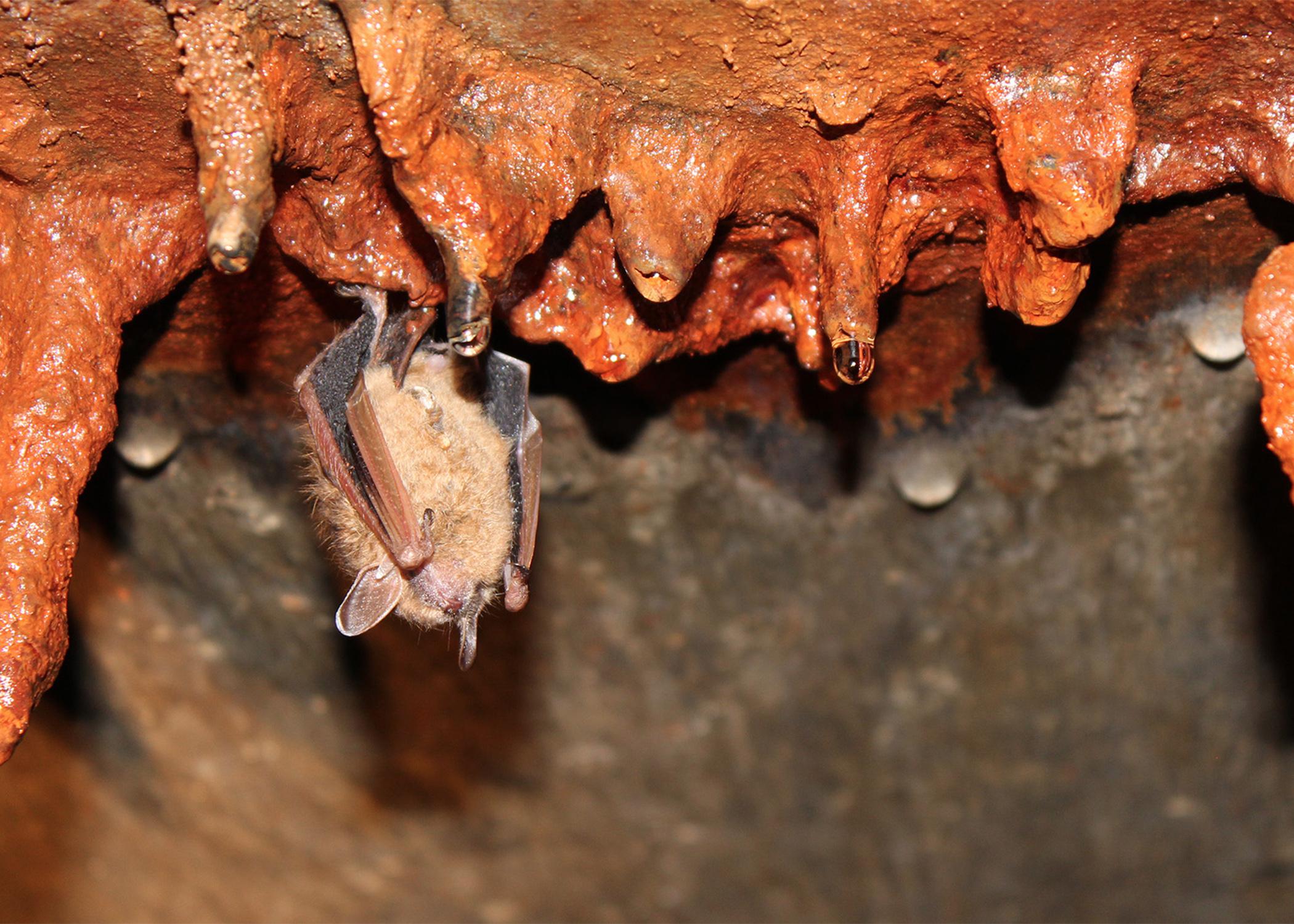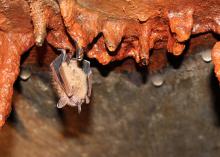Information Possibly Outdated
The information presented on this page was originally released on April 2, 2015. It may not be outdated, but please search our site for more current information. If you plan to quote or reference this information in a publication, please check with the Extension specialist or author before proceeding.
Bats enjoy the night life in Mississippi
By Jeanne Jones, Professor, and Daryl Jones, Extension Professor
MSU Forest and Wildlife Research Center
Mississippi State University
STARKVILLE, Miss. -- On warm Mississippi days as daylight gives way to dusk, flying, furry creatures -- the centerpieces of our Halloween decorations -- take wing in pursuit of mosquitoes and other pests.
Bats’ wings are formed by thin membranes that connect their front and back legs. Their skeletons and muscles are uniquely adapted for true flight. Although bats have eyes and can see, they locate insect prey and obstacles in their flight paths through echolocation. As they fly, bats emit clicks and vibrations into open space. These sounds bounce back upon impacting objects -- even an object as small as a mosquito.
Through special ear and facial structures, the bat can determine information about a targeted object and swoop to catch edible insects in midair. Smaller bats, such as red bats, often feed on mosquitoes and other small insects. Larger bats, such as big brown bats, feed on large insects, such as beetles and even horseflies. Every flying bat you see will typically eat 50 percent of its body weight in insects each night.
If the flying bat is a female with young, it will increase insect consumption by 20 percent to 30 percent. Some bat species may eat more than 5,000 insects per night, and many of these insects are considered pest species to human health, agriculture, horticulture and forestry. The U.S. Department of Agriculture estimates that bats save farmers approximately $3.5 billion annually by reducing insect crop damage.
Fifteen different kinds of bats are known to live in Mississippi, including, but not limited to, the big brown bat, Brazilian free-tailed bat, red bat, evening bat, southeastern myotis, Rafinesque big-eared bat, hoary bat, Seminole bat, gray bat, Indiana bat and northern long-eared bat. All of these species eat insects, and none feed on blood meals like vampire bats of the tropics. Our bat species are considered to be small mammals, and most weigh less than 1 ounce.
Depending on the species, bats may inhabit a variety of different habitat types, such as swamps, pastures, agricultural land, bottomland hardwood forests, and upland hardwood and pine forests. Some even inhabit urban areas. Bats often forage in openings above meadows, pastures, streams, lakes, ponds, forests, and neighborhoods due to their need for abundant insect sources and drinking water.
In urban areas, security and night lighting often attracts many insects. These insects attract bats, which can be seen flying above our neighborhoods, ball parks and university campuses. All bat species must have dark, protected places in which to roost during inactive periods in winter and in daylight hours. During winter months, bats enter a dormancy known as torpor, which is a very deep state of inactivity. When in torpor, bats have a very low metabolic rate and cannot awake quickly. A bat in torpor may appear dead or sick due to its degree of stillness.
Undisturbed roost sites are especially important to bats during winter torpor periods and when females have young. Bats may use many different types of roosts, including caves, buildings, large-cavity trees, bridges and culverts, and cisterns and silos. If bats are foraging in urban areas, they may often seek roost sites in buildings, a choice that often gets them into trouble with humans. Bats that roost in attic spaces or walls of buildings may accidentally enter the house when they emerge in the evening. If this intrusion occurs, open a window or door to provide the bat an escape route to the outside.
Because bats are fearful of humans and may bite if stressed, handling or picking up bats is never recommended. Placement of bat boxes can help attract bats away from roost sites in buildings. However, measures that block re-entry of roosting bats may be necessary to prevent them from coming back into building roost sites.
In some cases, large numbers of bats emerging from human-made roost sites are protected due to ecological and economic values. For example, the estimated 2 million Mexican free-tailed bats that roost under the Congress Avenue Bridge in Austin, Texas, from March through October consume about 2 tons of insects each night and generate $10 million in tourism dollars per year!
Although bats are often viewed as pest species when they are found in buildings, conflicts with humans and human land use often cause problems for bat survival. Of the 45 bat species found in the United States, seven have been listed as threatened or endangered. In Mississippi, nine of 15 species are considered endangered, rare or concern species.
Most drastic declines in bat populations have been attributed to human disturbance, such as eradication, cave commercialization, use of selected pesticides, and habitat loss through deforestation and conversion of forests for urban, agricultural and mining development. Declining bat populations can also result from flooding, freezing and diseases.
In the past decade, a newly introduced fungal disease -- white nose syndrome -- has caused drastic declines in bat numbers in the eastern U.S. Now more than ever, these mammals need effective conservation approaches. If bats are part of your life because you are interested, concerned about conservation or have uninvited tenants, information on bat management and bat house design and placement can be obtained from Bat Conservation International and the Mississippi Bat Working Group.
More information from Bat Conservation International can be found at http://www.batcon.org/. The Mississippi Bat Working Group can be contacted via email at msbats@hotmail.com.
Contact: Dr. Jeanne Jones, 662-325-2219; or Dr. Daryl Jones, 662-325-3133

Editor’s Note: Extension Outdoors is a column authored by several different experts in the Mississippi State University Extension Service.








